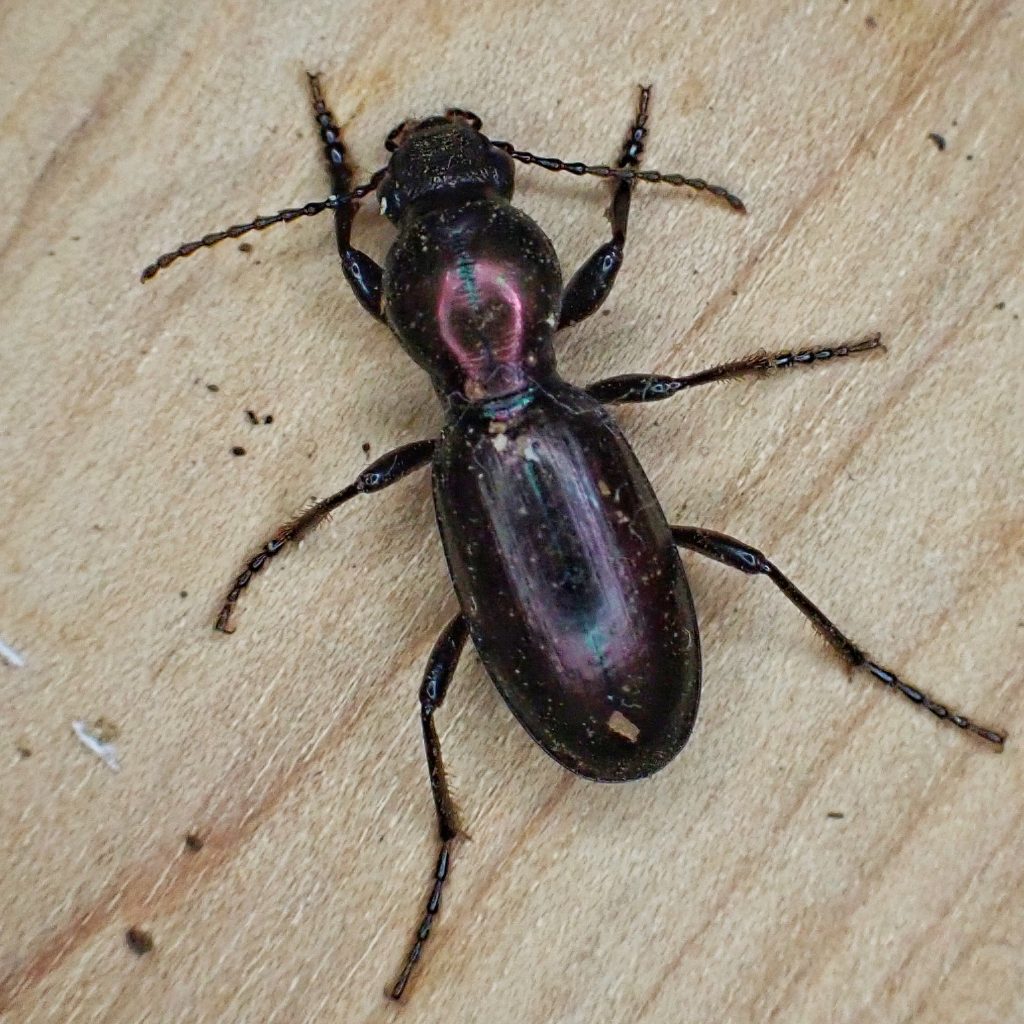
It’s really too bad that the common name listed for this carabid beetle in Pacific Northwest Insects does not appear to be widely accepted, because Mathew’s Angry Gnashing Beetle is one of the greatest, and most evocative, common names I’ve ever seen for any insect. And it is supported by the generic name Zacotus, which is from the Greek word for ‘very angry’, although Dr. LeConte doesn’t deign to tell us what made him feel that these beetles were particularly angry.
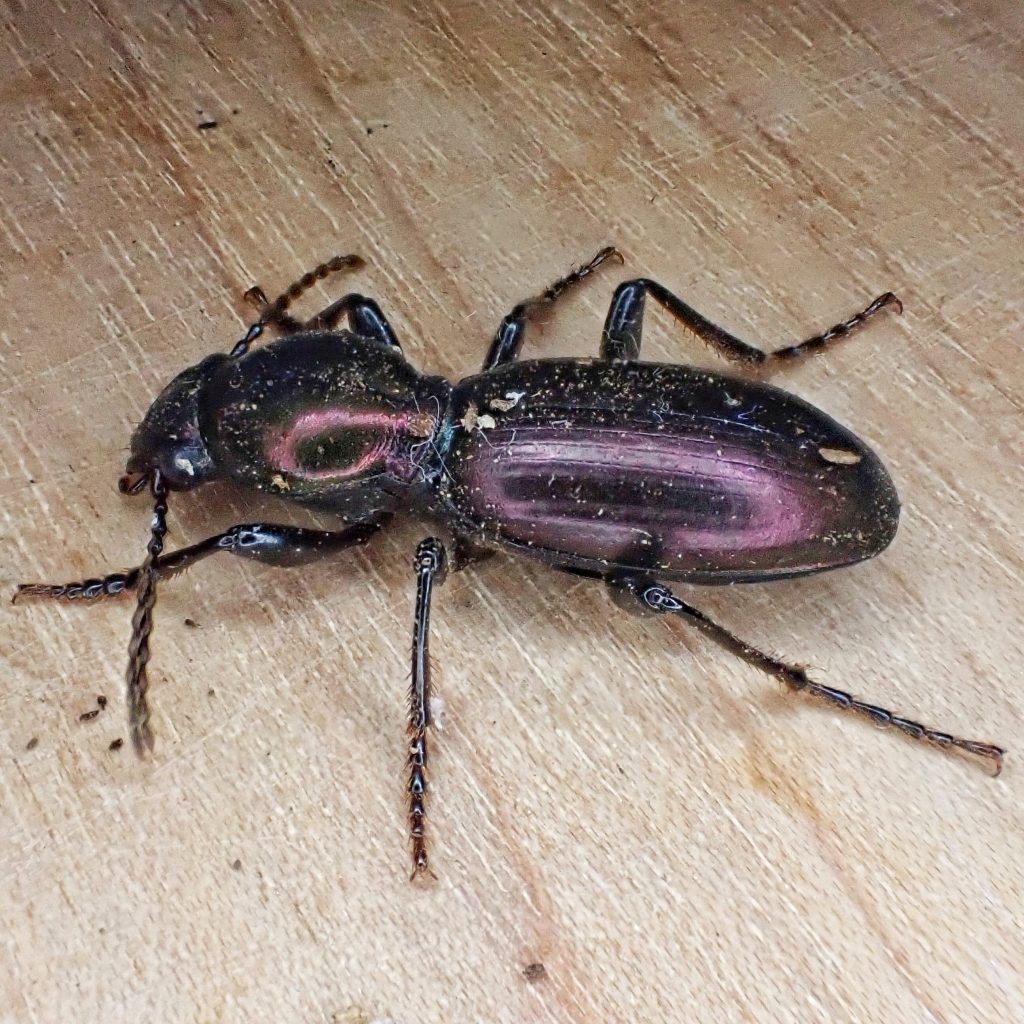
I wish that I had realized when I found this beetle, while walking a dusty forest road in the middle of the night trying to spotlight insects with my headlamp, that it was brachypterous (stunted winged) and thus flightless, because I’d have taken more in situ photographs. However, the rounded, wavy pronotum, and the way it narrowed to a slightly elongated waist, was so distinctive and yet outside the norm of what I usually see for ground beetles, that I got excited, and nervous that it would escape, and I collected it before it could do so. But it didn’t settle down that well after refrigeration, and was uncooperative when I tried to photograph it, so I didn’t end up with much diversity in my photos.
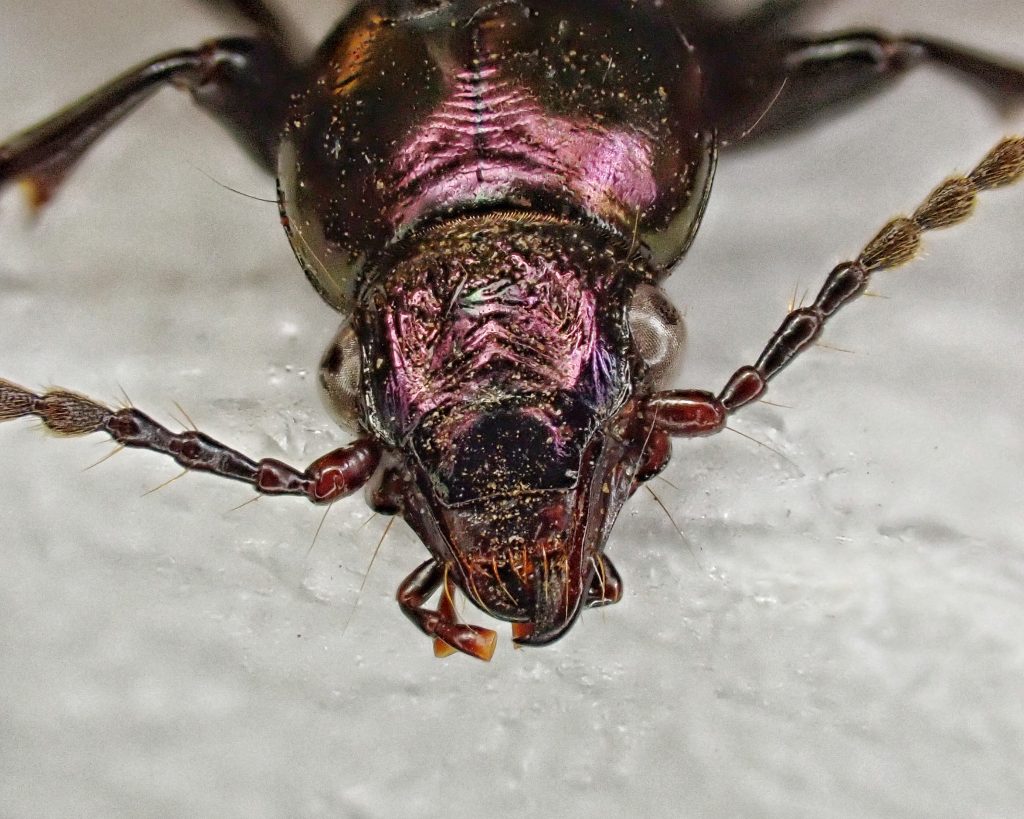
Considering the fact that this seems to be a common species (at least judging by its prevalence in pitfall traps in several studies), it seems odd that there is a real dearth of information on the life history of these little beetles. They spend their days under cover of logs and leaf litter in coniferous and mixed forests, and prowls at night. Since they are carabids, they are most likely predators, but I cannot confirm even that, and some carabids (e.g., Harpalus sp.) are herbivores. I did find that, according to this study (Craig; 1995), Zacotus matthewsii avoid forests that are regenerating or immature, in favor of mature and old growth forests.
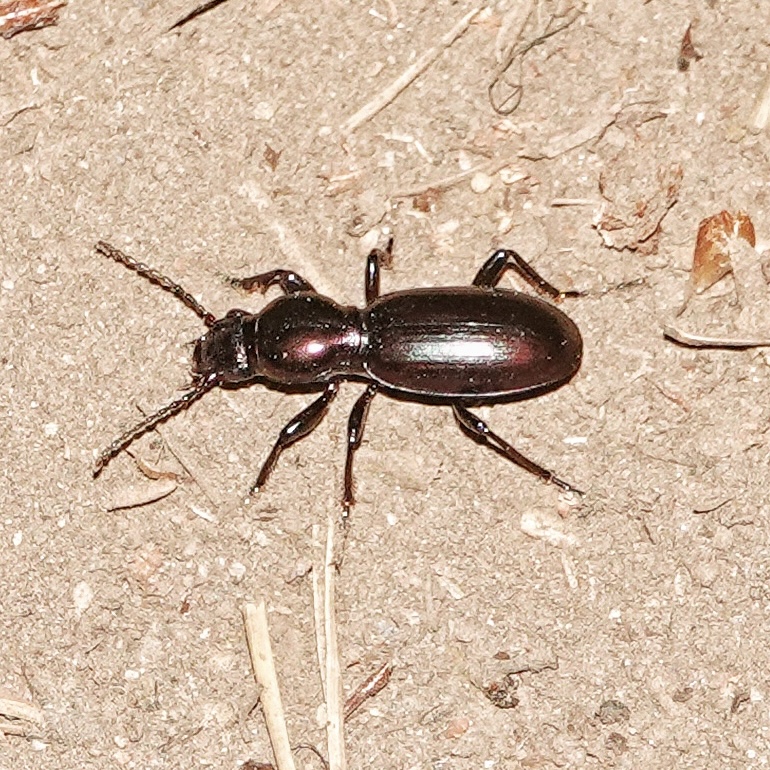
Description– Medium sized (12-17mm), narrow ground beetle with a rounded and wavy pronotum that narrows abruptly to a slightly elongated waist, wrinkled head, and shallow grooves on the elytra; may be copper colored, red, green, purplish or black, and shiny or matte; legs and antenna same color as body, or darker.
Similar species–Broscodera insignis and Miscodera arctica are smaller (6-10mm) and have legs and antenna paler than body.

Habitat-Moist to mesic forests up to 5,000’ elevation.
Range-Endemic to the PNW; Region wide in appropriate habitat, but absent from se Oregon, ne California, s Idaho.
Eats-presumably predaceous, but I cannot confirm this.
Eaten by– The only information I can find is that, at least on Goose Island, British Columbia, screech owls are known to eat this species (Hardy; 1950), but I’m sure that shrews and other nocturnal insectivores also prey on these beetles.
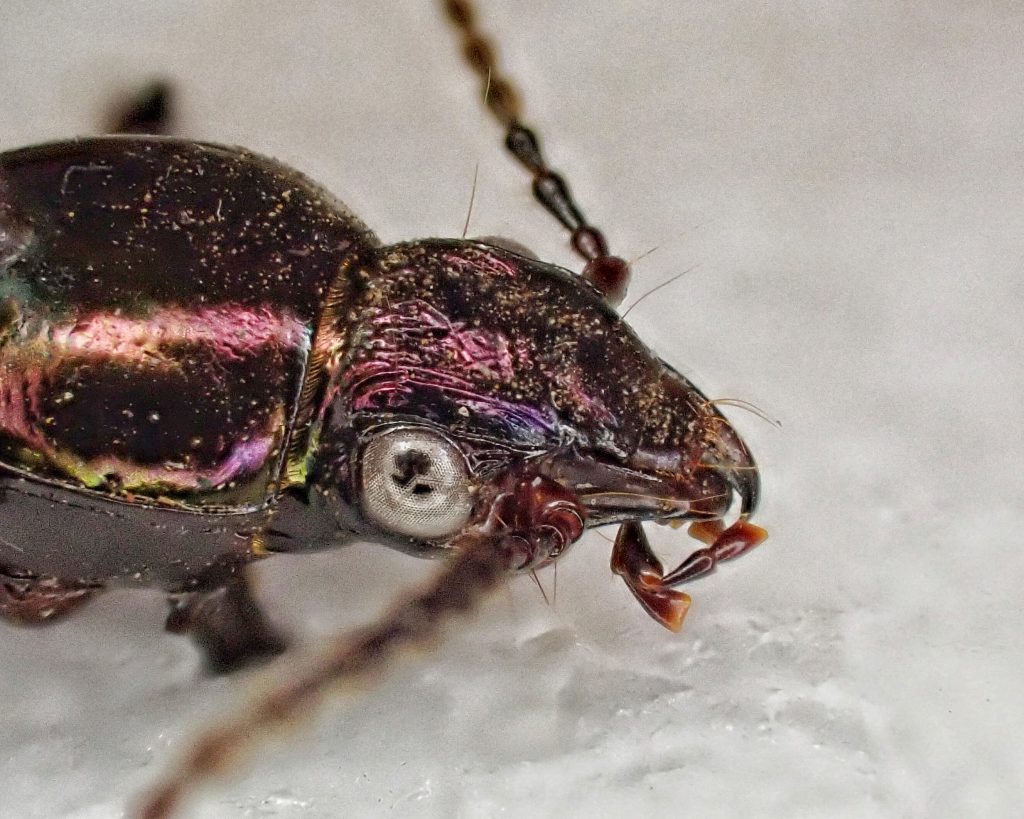
Adults active-Nocturnal-April through October
Life cycle– I can find no information at all on the life cycle of these beetles.
Etymology of names– Zacotus is from the Greek word for ‘very angry’, although Dr. LeConte doesn’t deign to tell us to what that refers. The specific epithet matthewsii honors Henry and Joseph Matthews, first collectors of this species, and brothers of Rev. Andrew Matthews, a notable Canadian coleopterist of the mid 19th century, for whom they often collected on Vancouver Island, and in other parts of British Columbia.
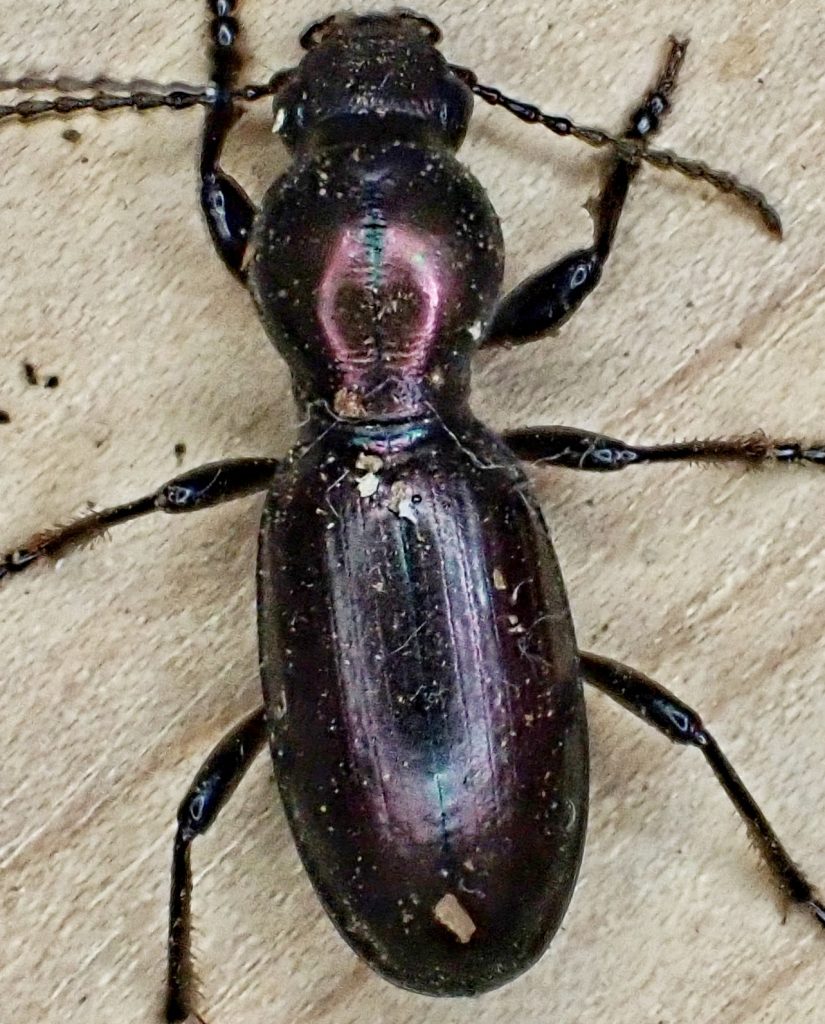
Sci-Hub | NOTES ON <i>ZACOTUS MATTHEWSII</i> LeC. | 10.4039/ent76188-9
Species Zacotus matthewsii – BugGuide.Net
https://www.gbif.org/species/127866169
https://open.library.ubc.ca/media/download/pdf/831/1.0086840/2
https://journal.entsocbc.ca/index.php/journal/article/download/2335/2399
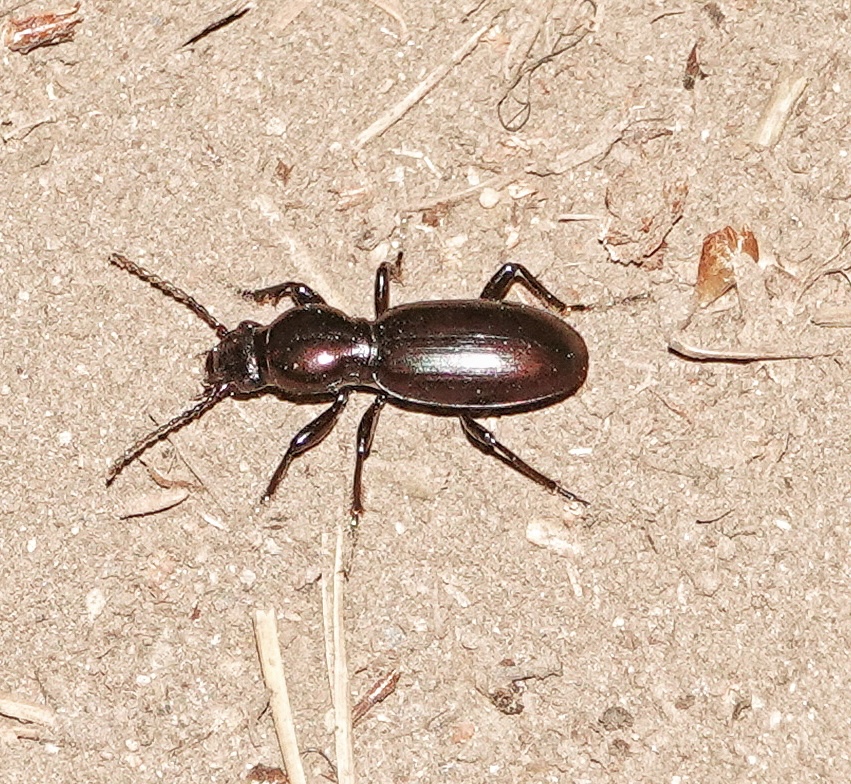
… an inordinate fondness for beetles, indeed, angry or otherwise!
Thank you for reminding me of that quote by JBS Haldane!
One of my favorite beetles Dan. I have found only 3-4 on San Juan in 13 years. Our old growth forests are disappearing, so I’ve been concerned about the viability of the species unless it manages to adapt under the pressure of ever shrinking habitat. Wonderful write up.
Thank you, Cynthia! This was the first one I’d found, or at least identified. There may have been others that scurried away too quickly for a good look. I was glad to hear that they do okay in mature second growth forests.